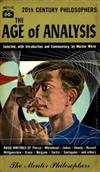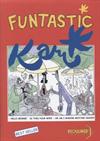
Quicksilver: The Baroque Cycle #1
Registered by vexter of Ljubljana, Osrednja Slovenija - Okolica Ljubljane in Ljubljana Slovenia on 4/27/2010
1 journaler for this copy...
Journal Entry 1 by vexter from Ljubljana, Osrednja Slovenija - Okolica Ljubljane in Ljubljana Slovenia on Tuesday, April 27, 2010
Amazon.co.uk Review
Quicksilver is a massive, exuberant and wildly ambitious historical novel that's also Neal Stephenson's eagerly awaited prequel to Cryptonomicon--his pyrotechnic reworking of the 20th century, from World War II codebreaking and disinformation to the latest issues of Internet data privacy.
Quicksilver, "Volume One of the Baroque Cycle", backtracks to another time of high intellectual ferment: the late 17th century, with the natural philosophers of England's newly formed Royal Society questioning the universe and dissecting everything that moves. One founding member, the Rev John Wilkins, really did write science fiction and a book on cryptography--but this isn't history as we know it, for here his code book is called not Mercury but Cryptonomicon. And although the key political schemers of Charles II's government still have initials spelling the word CABAL, their names are all different...
While towering geniuses like Newton and Leibniz decode nature itself, bizarre adventures (merely beginning with the Great Plague and Great Fire) happen to the fictional Royal Society member Daniel Waterhouse, who knows everyone but isn't quite bright enough for cutting-edge science. Two generations of Daniel's family appear in Cryptonomicon, as does a descendant of the Shaftoes who here are soldiers and vagabonds. Other links include the island realm of Qwghlm with its impossible language and the mysterious, seemingly ageless alchemist Enoch Root.
As the reign of Charles II gives way to that of James II and then William of Orange, Stephenson traces the complex lines of finance and power that form the 17th-century Internet. Gold and silver, lead and (repeatedly) mercury or quicksilver flow in glittering patterns between centres of marketing and intrigue in England, Germany, France and Holland. Paper flows as well: stocks, shares, scams and letters holding layers of concealed code messages. Binary code? Yes, even that had already been invented and described by Francis Bacon.
Quicksilver is crammed with unexpected incidents, fascinating digressions and deep-laid plots. Who'd believe that Eliza, a Qwghlmian slave girl liberated from a Turkish harem by mad Jack Shaftoe (King of the Vagabonds) could become a major player in European finance and politics? Still less believable, but all too historically authentic, are the appalling medical procedures of the time--about which we learn a lot. There are frequent passages of high comedy, like the lengthy description of a foppish earl's costume which memorably explains that someone seemed to have been painted in glue before "shaking and rolling him in a bin containing thousands of black silk doilies".
This is a huge, exhausting read, full of rewards and quirky insights that no other author could have created. Fantastic or farcical episodes sometimes clash strangely with the deep cruelty and suffering of 17th-century realism. Recommended, though not to the faint-hearted. --David Langford
Quicksilver is a massive, exuberant and wildly ambitious historical novel that's also Neal Stephenson's eagerly awaited prequel to Cryptonomicon--his pyrotechnic reworking of the 20th century, from World War II codebreaking and disinformation to the latest issues of Internet data privacy.
Quicksilver, "Volume One of the Baroque Cycle", backtracks to another time of high intellectual ferment: the late 17th century, with the natural philosophers of England's newly formed Royal Society questioning the universe and dissecting everything that moves. One founding member, the Rev John Wilkins, really did write science fiction and a book on cryptography--but this isn't history as we know it, for here his code book is called not Mercury but Cryptonomicon. And although the key political schemers of Charles II's government still have initials spelling the word CABAL, their names are all different...
While towering geniuses like Newton and Leibniz decode nature itself, bizarre adventures (merely beginning with the Great Plague and Great Fire) happen to the fictional Royal Society member Daniel Waterhouse, who knows everyone but isn't quite bright enough for cutting-edge science. Two generations of Daniel's family appear in Cryptonomicon, as does a descendant of the Shaftoes who here are soldiers and vagabonds. Other links include the island realm of Qwghlm with its impossible language and the mysterious, seemingly ageless alchemist Enoch Root.
As the reign of Charles II gives way to that of James II and then William of Orange, Stephenson traces the complex lines of finance and power that form the 17th-century Internet. Gold and silver, lead and (repeatedly) mercury or quicksilver flow in glittering patterns between centres of marketing and intrigue in England, Germany, France and Holland. Paper flows as well: stocks, shares, scams and letters holding layers of concealed code messages. Binary code? Yes, even that had already been invented and described by Francis Bacon.
Quicksilver is crammed with unexpected incidents, fascinating digressions and deep-laid plots. Who'd believe that Eliza, a Qwghlmian slave girl liberated from a Turkish harem by mad Jack Shaftoe (King of the Vagabonds) could become a major player in European finance and politics? Still less believable, but all too historically authentic, are the appalling medical procedures of the time--about which we learn a lot. There are frequent passages of high comedy, like the lengthy description of a foppish earl's costume which memorably explains that someone seemed to have been painted in glue before "shaking and rolling him in a bin containing thousands of black silk doilies".
This is a huge, exhausting read, full of rewards and quirky insights that no other author could have created. Fantastic or farcical episodes sometimes clash strangely with the deep cruelty and suffering of 17th-century realism. Recommended, though not to the faint-hearted. --David Langford









